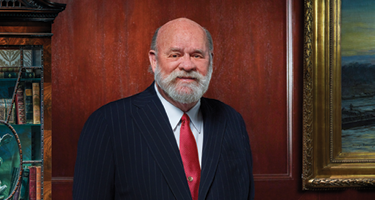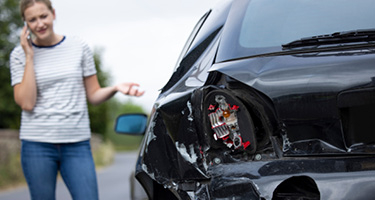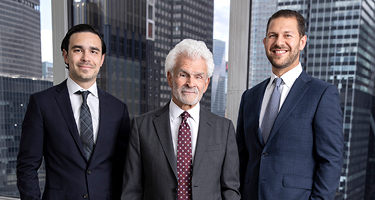As vacationers take to the roads this summer, they may not realize the dangers those driving the big rigs next to them face. Truck drivers have one of the deadliest occupations, and Trucks.com reports1 that truck driver deaths have risen by 11.2 percent since 2011.
Commercial motor carriers must “make sure the vehicles and drivers it employs meet all federal regulations to safeguard both its employees and the general driving public,” Beasley Allen lawyer Chris Glover explains in his book, An Introduction to Truck Accident Claims: A Guide to Getting Started. Yet, maintenance and liability are among the top safety concerns in the trucking industry.
While the trucking industry works to improve safety, some devices that promise protection fail to deliver.
An example is a truck accessory that has been deceptively marketed as a safety device: the cab guard. One of the earliest manufacturers, Merritt Equipment Co. (Merritt), coined the term “cab guard.”2 Attempts to regulate the device have failed, yet it remains on the market offering a false sense of security.
Cab guards were inspired by streetcar fenders and railcar guards, but U.S. patent records show the current design wasn’t approved until 1960.3 The device didn’t gain traction with the trucking industry until the federal government and other interested parties began evaluating the cause of heavy truck crashes in the 70s and 80s.
Soon after, the Federal Motor Carrier Safety Administration and the Society of Automotive Engineers mandated cab guards be installed on the back of large trucks and provided minimum manufacturing standards. However, implementation and compliance were left up to trucking companies, preventing the minimum standards from working as intended.
Between 1990 and 1993, New York witnessed nine cargo securement accidents with three fatalities,4 prompting congressional hearings and the creation of the North American Load Security Research Project. It was charged “to revise the regulations concerning protection against shifting and falling cargo for commercial motor vehicles engaged in interstate commerce,” according to the Federal Register.5 Despite the revision, the current design using weak aluminum remains inadequate.
Cab guard manufacturers continue hawking the dangerous products. Yet, Beasley Allen has exposed deceptive cab guard marketing through litigation. It has worked with clients in eight cases against three different cab guard manufacturers to obtain justice for the human lives tragically taken as a result of corporate greed.
“There are thousands of log trucks in use today with worthless cab guards on them,” Beasley Allen founder Jere Beasley said. “The advertisements tell potential users that cab guards will protect drivers from shifting loads, although it’s totally false. We continue to see the devastating effects of their deception.”
No design or performance standards currently apply to cab guard manufacturers, but their warning labels obscure this fact. For example, prior to 2005, Merritt’s product seemed to indicate the device complied with a regulation preventing the movement of at least one-half the weight of a truck’s cargo. Yet, a closer reading reveals it protects against only half of the 55,000 pounds of weight for an average load of timber.6
What’s worse, the cab guard’s ability to protect a driver was tested while the truck was not moving. Earlier this year, Merritt’s own design expert testified in Albritton v. Merritt (a Beasley Allen case)7 that the company’s cab guard would not protect a log truck operator from even one log.
Litigation efforts also forced manufacturers to change their products’ labels, including Road Gear, whose expert witness admitted that the company’s cab guards were not safe on log trailers. Similarly, Merritt’s expert acknowledged the cab guard would not withstand .7 G’s of force if it was struck by a 1,100-pound (or typical-sized) log during even a hard-braking scenario. It now warns against cab guard use on log or pole trailers. It further warns the cab guard “is NOT A SAFETY DEVICE [sic] and will NOT PREVENT SERIOUS INJURY or DEATH [sic] from forward shifting cargo as a result of an accident or impairment.” However, there is no indication the warning is properly passed along to the trucking companies or drivers, and it doesn’t address the hundreds of thousands of cab guards sold prior to 2005.
The warnings are a welcome step in the right direction for protecting unsuspecting log truck drivers who think they are safe, but don’t go nearly far enough. The public remains largely unaware of the dangers of the defective products, and the manufacturers continue to place profit over protection.
For more information on trucking safety, see "Safety Technology: Preventing Truck Accidents Before They Happen"
---------------------------
1https://www.trucks.com/2016/12/19/truck-driver-deadliest-job/
2 http://merrittproducts.com/cab-racks-dyna-drom-cr
3U.S. Patent: Truck driver protection shield: http://www.google.ms/patents/US3049363
4Federal Motor Carrier Safety Administration: https://ai.fmcsa.dot.gov/CrashStatistics/Default.aspx
5Truck cargo securement regulations and enforcement: hearing before the Subcommittee on Investigations and Oversight of the Committee on Public Works and Transportation, House of Representatives, One Hundred Third Congress, first session, July 27, 1993: https://archive.org/stream/truckcargosecure00unit/truckcargosecure00unit_djvu.txt.
6 Federal Register: Development of a North American Standard for Protection Against Shifting and Falling Cargo: https://www.federalregister.gov/documents/2000/12/18/00-31919/development-of-a-north-american-standard-for-protection-against-shifting-and-falling-cargo
7http://www.beasleyallen.com/news/jury-finds-for-family-of-man-killed-in-log-truck-crash/
































